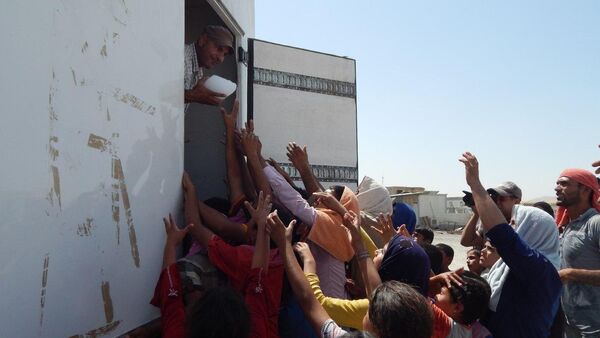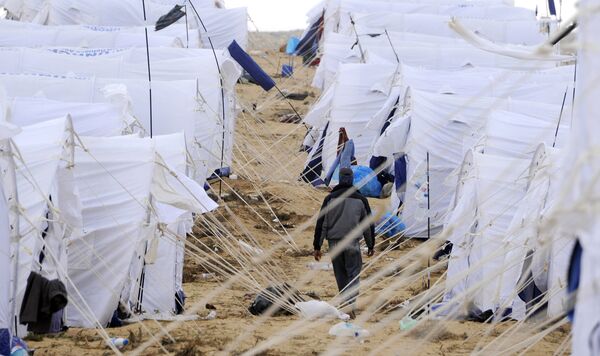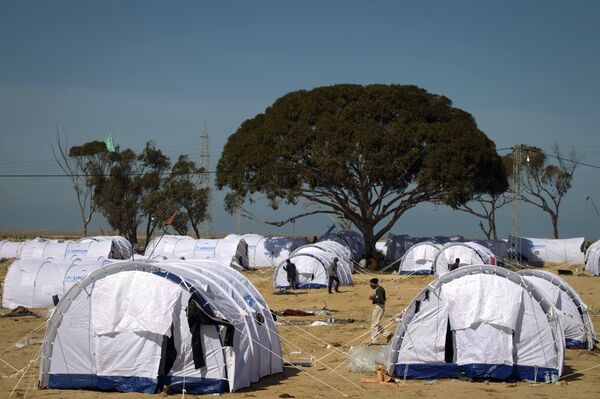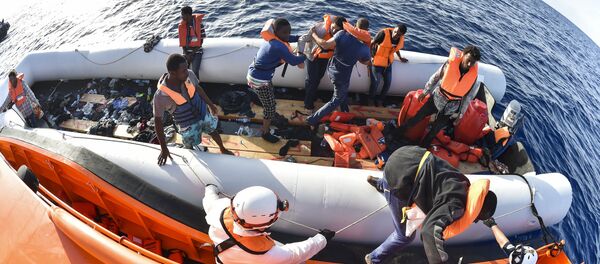According to official information, there are 34 camps for refugees and illegal migrants, most of them in the southern regions of Tripoli and Misratah, all run by a state committee on illegal migration.
There are more such camps in Libya’s central desert regions run by tribal councils and controlled by rival armed factions which international relief organizations are unable to reach out to and properly assess the situation.
Interviewed by Sputnik, a member of one such relief organization said, speaking on condition of anonymity, that “this state of things leads to flagrant human rights violations at these camps and refugee centers.”
“The UN is warning us about the threat of a humanitarian catastrophe unfolding there,” he said.
He also mentioned persistent problems such as overpopulation, scarce food and drinking water and the lack of sanitation.
“As a result, diseases there are spreading like brushfire, women agree to be raped in order to get at least some food. Unfortunately, all these things are happening in state-controlled camps too,” he added.
“The creation of new refugee camps with good financing will solve the problem of food shortages and the lack of qualified medical assistance," he emphasized.
According to the Medics Without Borders (MSF) international humanitarian organization, the overpopulated refugee centers in Libya are unable to meet even the most basic needs of the migrants, which leads to the spread of scabies, small pox and other diseases. The lack of ventilation results in all kinds of respiratory problems. The MFS also points to the lack of legislations regarding the work of these refugee camps.
Despite all these problems, the deployment of a network of refugee camps in Libya has helped improve the situation in Europe, including in Italy where, according to official data, a mere 2,932 refugees arrived in the country between July and the end of August, compared to more than 21,000 arrivals registered over the same period of last year.
As a result, the overall number of refugees who arrived in the country in August 2017 is just one-tenth of what Italy saw over the same period of last year.
An official with the Libyan Internal Ministry’s department on illegal migration told Sputnik that the government was working closely with international organizations to improve the situation.
“Right now, the government is working to improve the living conditions at the majority of refugee camps especially the most overpopulated ones. This work received an additional boost following international recommendations to close the refugee camp at Sarman and Tameena and move most of their inhabitants to the Abu Saleem center in Tripoli,” he said.
He added that the government was coordinating its work with the EU, Italy and international organizations working at refugee centers, including the United Nations Support Mission in Libya (UNSMIL), the United Nations High Commissioner for Refugees (UNHCR), the International Organization for Migration (IOM) and the International Committee of the Red Cross.
“They are helping the government to upkeep the centers in line with internationally-recognized standards,” the official noted.
He added that there are an estimated 8,000 refugees and illegal migrants living in the camps and that the number of those detained for trying to illegally leave the country keeps going up.”
The European Union has promised to cooperate with Libya on the migrant and refugee issue, and adopt the same scenario as in the EU-Turkey migration deal.
Libya has been in a state of civil war since its longtime leader Muammar Gaddafi was overthrown in 2011.
The UN-backed Government of National Accord operates in the country's west and is headquartered in Tripoli.
The eastern part of the country is governed by its parliament, with is headquartered in the city of Tobruk. The parliament is backed by the Libyan National Army headed by Khalifa Haftar.






